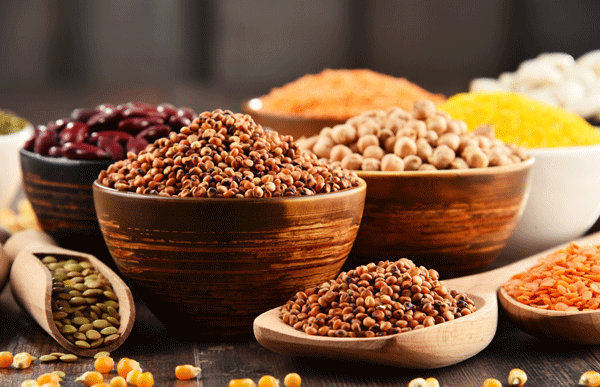Considering how eager the fitness industry is to identify (and sell) the magic bullet for weight loss and better health, we should be drowning in commercials for split peas. Not only are there studies connecting diets high in fiber to weight loss, positive connections have also been made regarding lowering cholesterol, regulating blood sugar and addressing a variety of digestive issues. Unfortunately, most people don’t hit the 25 – 35 grams of fiber recommended daily.
If increasing the amount of fiber rich foods in your diet sounds like a hassle, you’re in luck. We have an expansive Food Bank that lists the fiber content of hundreds of common foods and recipes. Now that you’re all out of excuses, check out these super easy ways to add more fiber to your diet.
Ditch the white stuff

White bread and white rice look and taste the way they do because they’ve been stripped of their fiber. Just look at the difference in grams of fiber per serving between a cup of white rice and brown rice. That’s a six fold increase of fiber you’re missing out on by not switching from white to whole grain. The same can be said for white and whole wheat breads, though the difference isn’t as big. When you’re out shopping, look for breads that are higher in fiber, like this one, or switch to a high fiber tortilla to mix things up.
Plan fruit and veggies as your snacks

Making high fiber foods a priority doesn’t have to mean eating salad for every meal. As cliche as it might sound, adding something as simple as raw carrot sticks as a snack to your meal plan can make a big difference. 1 cup of baby carrots brings over 7 grams of fiber to the table. Other high fiber snacks to you may not have thought of include raw jicama (6.4 grams per cup,) and raw pear (one medium contains 5.5 grams.)
Eat more beans

Legumes are an excellent source of fiber and can be added as both main meals and snacks in your diet plan. We’ve talked about how awesome lentils are, in part because one cup provides over 20 grams of fiber. Chickpeas make a great snack, dip, and main dish all while offering 24.4 grams of fiber per cup. Split peas, though not technically a legume, provide over 16 grams of fiber per cup, cooked, and make an excellent soup. Beans are also a high protein alternative to lean meats if you’re looking to add more vegetarian dishes to your meal plan.
Blend flax and chia seeds into your shakes

Your basic protein shake is a fantastic choice post workout or when that afternoon snack attack hits, but it’s also a missed opportunity to boost your fiber. Flaxseed and chia seeds provide 2.8g and 4.1g of fiber, respectively, in each tablespoon. All you have to do is spoon it into your blender or shaker before mixing and you’re instantly getting more fiber. If you really want to boost your shake, adding a tablespoon of psyllium husk will do the trick at 13.5 grams, but remember to drink a lot of water when you do this to ensure you don’t experience any, um, irregularities in your day.
Stop drinking “smoothies.”

These “healthy” smoothie and juice alternatives to soda are a big mistake, as we’ve mentioned before. Yes, even the “more nutritional” green ones won’t do a lot to make your diet more complete. First, the commercially produced ones are usually loaded with sugar. They boast being full of fruits and vegetables, but if you’ve ever had a drink of kale or spinach juice, you know they taste NOTHING alike. Second, most of these remove a lot, if not all, the fiber before bottling them, which robs you of their nutritional value. Skip these drinks in favor of eating your fruits and veggies. If you absolutely can’t go without your smoothy, make them at home, make sure they are a balance of fresh fruits and vegetables and keep your calorie targets in mind. The calories and sugars in fruits can add up quickly, so if you wouldn’t eat an entire pineapple in one day, it’s best not to drink one either.
In conclusion
Adding more fiber rich foods to your diet can be as simple as swapping out or introducing a few new items in your meal plan. The first step to success here is tracking how much fiber you’re already getting so you know exactly how much more to add. You may not start reaching your fiber target consistently right away, but just adding one extra serving of fruit or veggie a day will make a big difference.






